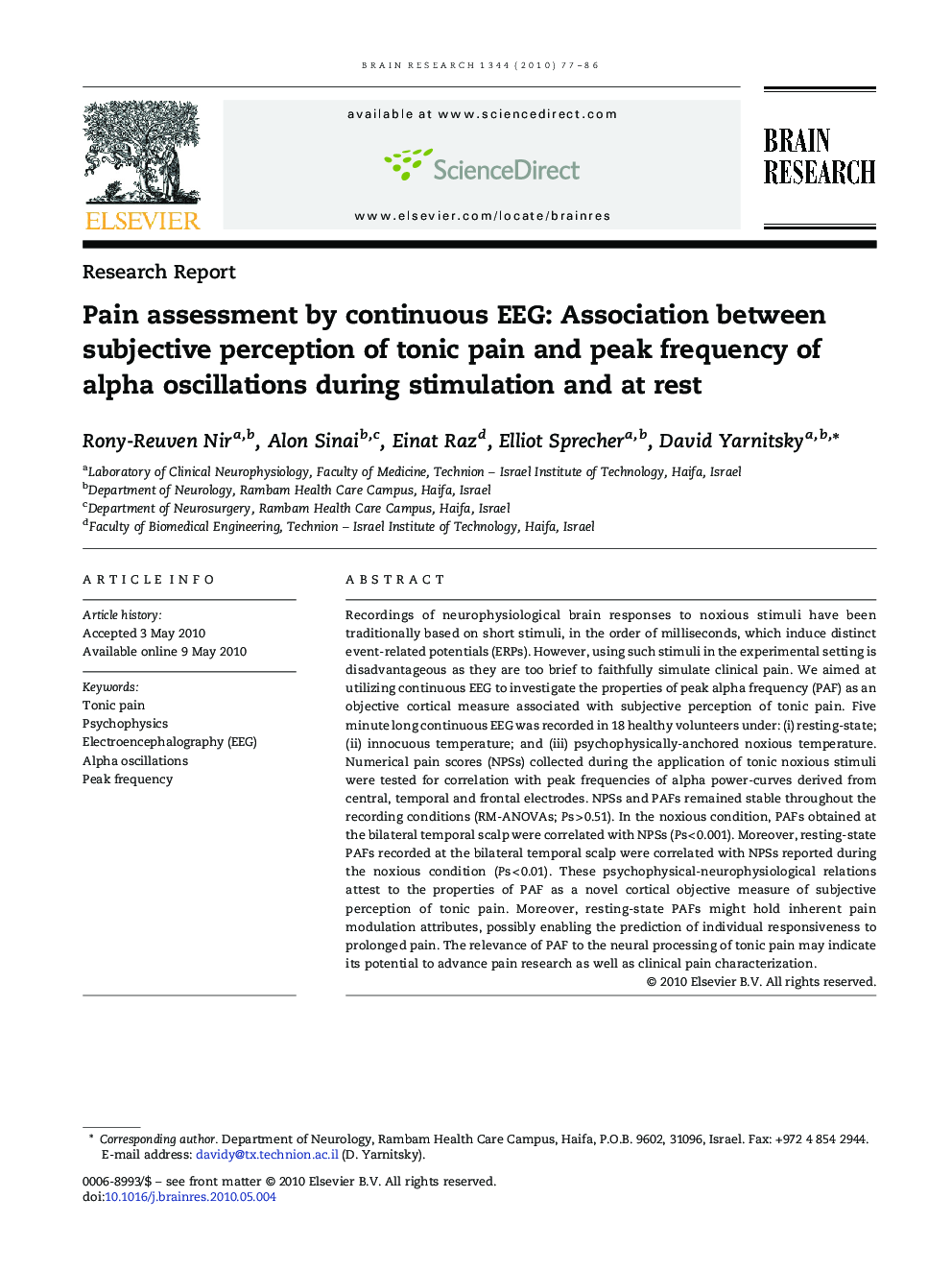| Article ID | Journal | Published Year | Pages | File Type |
|---|---|---|---|---|
| 4326824 | Brain Research | 2010 | 10 Pages |
Recordings of neurophysiological brain responses to noxious stimuli have been traditionally based on short stimuli, in the order of milliseconds, which induce distinct event-related potentials (ERPs). However, using such stimuli in the experimental setting is disadvantageous as they are too brief to faithfully simulate clinical pain. We aimed at utilizing continuous EEG to investigate the properties of peak alpha frequency (PAF) as an objective cortical measure associated with subjective perception of tonic pain. Five minute long continuous EEG was recorded in 18 healthy volunteers under: (i) resting-state; (ii) innocuous temperature; and (iii) psychophysically-anchored noxious temperature. Numerical pain scores (NPSs) collected during the application of tonic noxious stimuli were tested for correlation with peak frequencies of alpha power-curves derived from central, temporal and frontal electrodes. NPSs and PAFs remained stable throughout the recording conditions (RM-ANOVAs; Ps > 0.51). In the noxious condition, PAFs obtained at the bilateral temporal scalp were correlated with NPSs (Ps < 0.001). Moreover, resting-state PAFs recorded at the bilateral temporal scalp were correlated with NPSs reported during the noxious condition (Ps < 0.01). These psychophysical-neurophysiological relations attest to the properties of PAF as a novel cortical objective measure of subjective perception of tonic pain. Moreover, resting-state PAFs might hold inherent pain modulation attributes, possibly enabling the prediction of individual responsiveness to prolonged pain. The relevance of PAF to the neural processing of tonic pain may indicate its potential to advance pain research as well as clinical pain characterization.
